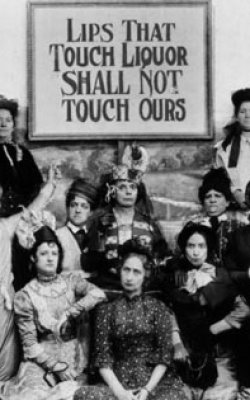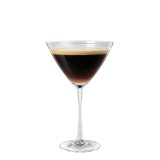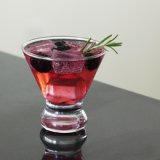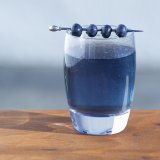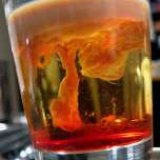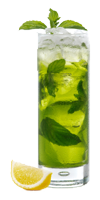On January 17, 1920, the 18th Amendment to the Constitution of the United States made “the manufacture, sale, or transportation of intoxicating liquors within, the importation thereof into, or the exportation thereof from the United States…for beverage purposes….” illegal. But, two little words were missing from that list: ownership, and consumption. It was those 2 words that made all the difference in the years ahead.
The Volstead Act, the body of law responsible for the enforcement of Prohibition, defined “intoxicating liquor” as any beverage containing half a percent (.5%) or more of alcohol by weight. The Act did provide few exclusions including wine for religious purposes. Catholic and Jewish religious leaders, who opposed Prohibition were quick to secure supplies of “sacramental wine” for themselves, and their congregations. Not surprisingly, membership rosters swelled!
The strictly hierarchical structure of the Catholic church ensured that priests signing orders for sacramental wine were actually priests and not imposters. However, the looser structure of the Jewish religious organization, led to many bootleggers claiming to be rabbis to take advantage of the loophole in the Volstead Act. In response, the market introduced sacramental champagne, crème de menthe, brandy, and others. Asked to rule on whether these liquors truly belonged under the sacramental wine exception, a federal judge in the District of Columbia allowed it, stating, “it is not the content of the beverage, but the purpose for which it will be used that determines whether or not it is sacramental wine.”
Another exception to the Volstead Act allowed for the making of up to 200 gallons of non-intoxicating cider or homemade fruit juice each year. The Bureau of Internal Revenue, however, struck down the .5% definition of “intoxicating,” with regard to homemade wine in July of 1920. The Bureau stated that, “some drinks that contain more than the prescribed one-half of 1 per cent, while they may cheer, do not inebriate.” This ruling opened the door to a booming home winemaking business.
 Referred to as the “Noble Experiment,” Prohibition lasted almost 14 years before the 21st Amendment repealed the 18th Amendment returning control of liquor laws to the states. The Prohibition years had a profound impact on society and American’s attitudes towards liquor. While some wine growers ripped out their vines and replaced them with apricots and other fruit trees, other growers found religion and not only survived the prohibition years, but prospered.
Referred to as the “Noble Experiment,” Prohibition lasted almost 14 years before the 21st Amendment repealed the 18th Amendment returning control of liquor laws to the states. The Prohibition years had a profound impact on society and American’s attitudes towards liquor. While some wine growers ripped out their vines and replaced them with apricots and other fruit trees, other growers found religion and not only survived the prohibition years, but prospered.
Georges de Latour of Beaulieu Vineyards was one such. De Latour, a Catholic, had secured connections within the Catholic church in the years prior to prohibition, to provide the sacramental wine for churches across the country. During the entirety of Prohibition, Wente Vineyards sold 100% of its harvest to de Latour to be made into sacramental wine. Beringer, Martini, and Concannon also sold to the church.
De Latour and other makers of sacramental wine did not restrict themselves to providing for the Catholic church. They also made kosher wine, and provided wine for Lutherans and the Russian Orthodox. While de Latour’s kosher wines were known to be truly kosher, other winemakers such as Louis Martini, were known to sneak back into the winery after the rabbi had gone to, in the words of his son, “add the ingredients that made the wine palatable.”
Wine growers who had not gotten into the religious market, began selling their grape harvests to home winemakers. Zinfandel grapes were popular among the home winemakers who lived near vineyards but the tight bunches and thin skins left the grapes subject to rot, rubbing, and abrasion on the long journey to the East Coast markets. The thicker-skinned Alicante Bouschet grapes transported well and were, therefore, heavily planted in California during Prohibition despite the poor quality of the wine they produced.
Demand for wine grapes soared. California land dedicated to grape-growing increased by 700% during the first 5 years of Prohibition. By 1928, approximately 27,900 railroad carloads of grapes left California bound for New York alone. The volume was so great that the Pennsylvania Railroad expended its Jersey City freight terminal solely to accommodate the thousands of grape-laden boxcars. Prices increased as well as volume. During the first four years of Prohibition, a ton of grapes went from a pre-Prohibition price of less than $30 to a staggering $375. 
Another method of legally distributing wine grapes during Prohibition was to sell grape concentrate in the form of a solid block (about the size of a pound of butter) called a “wine brick” or “wine block”. These wine bricks came in all your favorite pre-Prohibitions flavors including: port, sherry, and burgundy. According to the law, these bricks could be used by the consumer to make “non-intoxicating fruit juice.” In order to comply with the letter, if not the spirit, of the law, the wine bricks were sold with a warning on the label cautioning the consumer not to add yeast or sugar to the grape juice or to leave it in a cupboard for 20 days before drinking because it “might ferment and turn into wine.”
While the California grape growers clearly did well for themselves during Prohibition, the vintners fared poorly. With the exception of the few vintners such as Georges de Latour who were able to continue to make and sell wine for religious purposes, most vintners lost their jobs and their livelihood. The Oenological science classes at the University of California at Davis were discontinued during the 20’s. As a combined result, there were few capable wine makers left to pick up wine making once Prohibition was lifted in 1933.
Repeal found the California wine grower eagerly tearing out the rows of hated Alicante vines and replacing them with tastier varietals. Vintners struggled to regain lost winemaking knowledge and to refill the barrels and casks with the “liquid poetry”. During the 13 years and 10 months of Prohibition, some wineries closed their doors, a few made fortunes, most did what they needed to do and just to survive. Today, 92 years after Prohibition began, 79 years after it ended, California wines are counted among the very best in the world.

